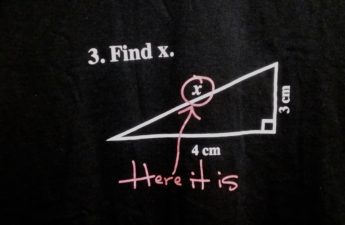So, this week is kind of where it all starts to come together. How to take everything we know to plan a really engaging lesson that students latch on to and that moves their thinking forward.
Being an Ignition Expert means you, as the teacher, take into account where students have been mathematically, anticipate strategies and thinking they will use, and understand where the math will take them in the future to plan the stages of your lessons to maximize student growth and understanding. Much of this can happen prior to the lesson, but some of it is a game-time decision.
We all know preparation is a major factor in how well a lesson goes. Some really good lessons do happen on the fly, but in my experience the better I prepare, the better it goes.
One factor in getting prepared has to do with knowing your students. This doesn’t only involve knowing their interests and who they are but also their patterns of thinking and what mathematical concepts they have already been exposed to. It’s also important to know where the concepts will take them in the future. I have experience teaching kids from age 4 through 64 {okay…I don’t really know how old my oldest community college student is, but you get the point!} and I have used this as a bullet point on my resume for years. I claim since I have taught all of these levels I know where students come from and where they are going, mathematically speaking.
That is a true statement.
What I never really stopped to consider is the amount of time I spent really connecting the conceptual pieces together, learning the differences in complexity and thinking that occur across the span of a student’s mathematical career. Sure I know multiplication gets introduced in second or third grade and is extended throughout the course of school. I even know what multiplication looks like at different levels. The thing I haven’t really studied, though, is how to connect what students know about multiplication to the new extension. Seeing the area model transform into base ten blocks and algebra tiles in Week 4 was really eye opening for me. It makes me realize I still have work to do and makes me want to spend some time really diving into elementary mathematics so that I can teach middle school math better.
On the other end, I need to spend some time following those same concepts through high school level math. I’m understanding why a mathematics concentration for my elementary education degree required more math hours than my high school math teaching friends had to take! {Although, to be fair, I’m still not convinced proving advanced calculus theorems provides much value to an elementary or middle school teacher…that class nearly did me in!}
Understanding the continuum of the concept I am teaching is only one part of this ignition story. Knowing where students are coming from doesn’t mean they understand the concepts, so I have to really know the patterns of thought they have shown and anticipate the strategies and thinking they will try during the lesson. This is one piece I often do in my head, but Kyle and Jon suggest actually writing out example solutions that involve all the different ways students might work a problem. Not only how they might think about the problem, but also what level of thinking each one represents. That is, from simple to complex and from concrete to abstract.
Understanding what students might do is key in directing the lesson. As students work, I should be making note of who is using each strategy and add any unanticipated strategies to the list. Instead of randomly calling on students or asking for volunteers to share ideas, purposeful sequencing of shared strategies allows the opportunity for students in earlier stages of thinking to build understanding and become more efficient. Structuring the sharing of ideas from most basic and concrete to the most complex and abstract and leading students to identify the similarities and connections between examples is an important step in moving students forward.
I would say this is the biggest piece I am missing in my teaching. So many times when I ask for volunteers to share, I have no idea what they are going to say and I get surprised by the misconceptions. I usually recover well by asking others to critique the work or idea and we are able to correct the errors of thinking, but having more structure to this portion of a lesson will definitely serve my students better.
The final piece is deciding whether to proceed or pivot. If students respond well to the lesson and demonstrate understanding it is time to proceed to the next lesson. If not, let’s pivot and reteach or practice this newly acquired skill before moving on. This is the piece I am really good at. Deciding whether to move or stay. However, it does get me in trouble every year since my pattern is to run out of time before testing. I believe being consistent with the Making Math Moments model will help my pacing. As Kyle and Jon say several times throughout the course, using this format saves time in the long run because it deepens student understanding which can streamline future learning.
I am really enjoying having this structure to work with in planning my lessons. I would love to hear how you are using what happens in your lessons to ignite your next moves as a teacher! Please share in the comments!



